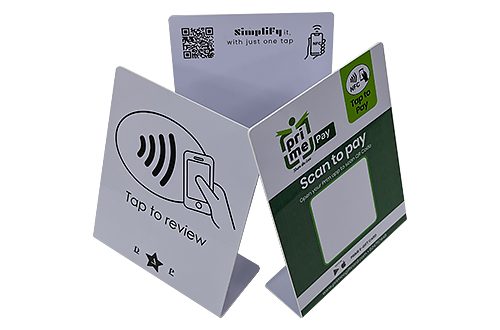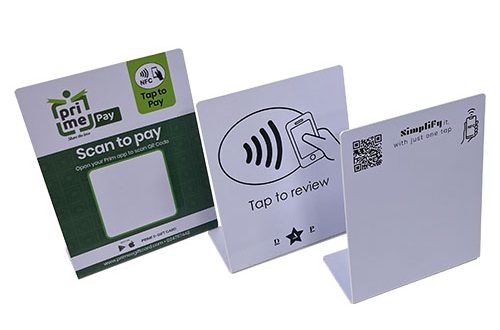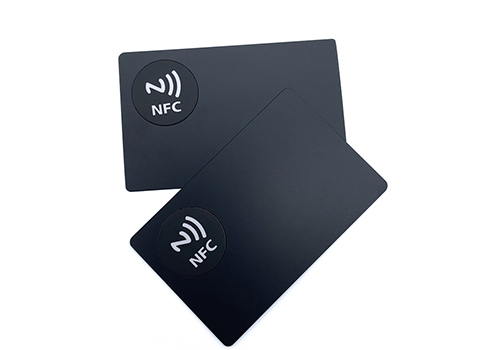
Comparison between NFC and Other Digital Technologies for Business Cards
Overview of NFC Technology
NFC (Near Field Communication) is a contactless communication technology that allows two enabled devices to communicate with each other when they are placed within close proximity, typically within a few centimeters. The technology allows for data transfer between devices, making it useful for various applications such as payment transactions, access control, and inventory management.
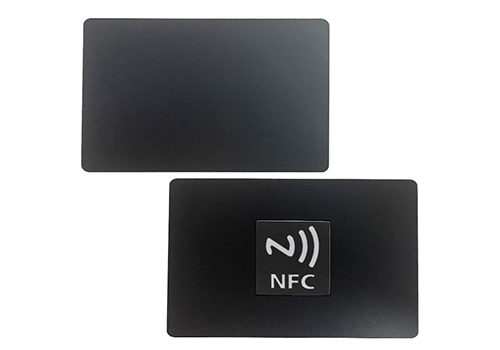
Benefits of NFC for business cards include:
Ease of Use: NFC business cards allow for quick and easy communication, eliminating the need for manual entry of contact information.
Better Marketing: NFC business cards allow for the incorporation of marketing messages and promotional offers, thereby promoting ease-of-use and enhancing customer engagement.
Versatility: NFC technology is versatile; various devices, including smartphones and tablets, can read and transmit NFC signals.
Limitations NFC technology for business cards include:
Compatibility: Compatibility issues can arise when the recipient’s device is not NFC enabled.
Limited Range: As NFC has a limited range of communication, the devices must be within a few centimeters to enable communication.
Security Risks: As with any contactless technology, there are security risks associated with NFC business cards, making privacy and data security a matter of concern for businesses.
In conclusion, NFC technology is an effective tool for creating innovative and engaging business cards. The benefits of NFC technology have the potential to enhance customer engagement and lead to better marketing for businesses. However, businesses need to be aware of the limitations and security concerns associated with NFC business cards to use the technology safely and effectively.
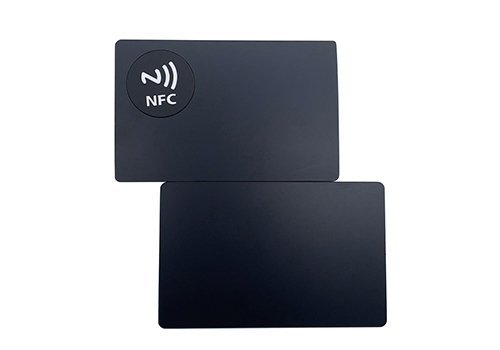
Comparison with Other Digital Business Card Technologies
Comparing NFC technology with other digital business card technologies reveals their differences in usage, compatibility, and security.
Comparison with QR codes: Unlike NFC that requires devices to be within close proximity for communication, QR codes can be scanned from a distance using a smartphone’s camera. The primary advantage of QR codes is the ability to store vast amounts of information, including contact information, website addresses, and product details. However, QR codes don’t offer security features as robust as those of NFC technology. Additionally, QR codes have limited compatibility issues since most smartphones come equipped with QR readers.
Comparison with Bluetooth Low Energy (BLE): Bluetooth Low Energy technology shares the capability of communicating with NFC technology when it comes to device pairing. However, unlike NFC, BLE technology can communicate over a much more extensive range, making it convenient for use in larger areas. Similar to NFC, BLE technology has powerful security features, including user identification, encryption, and authentication. However, the battery usage of BLE is significantly higher than NFC and often requires more frequent charging.
Comparison with Augmented Reality (AR): Augmented Reality is fast becoming a popular technology, especially with millennials. Businesses that use AR technology in their business cards offer an interactive experience to the users, which enhances customer engagement. Unlike NFC, which can transmit data to NFC-enabled devices promptly, AR technology requires the download of AR applications for the best experience. Additionally, AR technology offers very little in terms of data security and privacy constraints.
In conclusion, NFC technology, QR codes, Bluetooth Low Energy technology, and Augmented Reality each have their distinct advantages and disadvantages that businesses need to consider when developing digital business cards. NFC technology offers ease of use, higher security features with a limited range of communication, whereas BLE technology offers a much larger communication range, but higher battery usage. QR codes, while convenient, lack NFC’s robust security features, thus being more vulnerable to hacking attacks, and AR technology provides an interactive experience, but with limited data security and privacy.

Choosing the Right Technology for Your Business
Choosing the right technology for your business involves identifying your business needs, evaluating each technology’s features and applications, and considering budget and scalability.
Identifying business needs: The first step in choosing the right technology for your business is understanding your business’ needs. This includes understanding the industry, customers, target audience, and goals. Once you have identified your business needs, you can determine which technology best suits your business.
Evaluating features and applications of each technology: After identifying business needs, the next step is to evaluate the features and applications of each technology. Businesses should compare the features, benefits, compatibility, security, and overall functionality of each technology to determine which is most suitable for their business needs.
Considering budget and scalability: When choosing a technology, businesses need to consider their budget, along with each technology’s scalability. The cost of adopting and implementing a particular technology can vary significantly, hence businesses need to determine what amount they can spend effectively. The technology chosen should be scalable to fit the business’s future growth and expansion needs.

In conclusion, choosing the right technology for your business can have a significant impact on its success. Identifying your business needs, evaluating each technology’s features, applications, costs, scalability, and security risks, is crucial to help you make the best decision. By doing your research and carefully considering your options, you can select technology that is compatible with your business strategy, enhances customer relationships, and drives success.
How NFC Helps Improve Marketing Strategy
NFC technology helps to improve marketing strategy in several ways:
Ensuring a seamless user experience: NFC technology ensures that the user’s experience is easy, fast, and convenient. By simply tapping an NFC-enabled device, customers can instantly access information without needing to enter passwords or install apps. This greatly enhances the customer experience—as users are more likely to continue with an interaction that is quick and easy, leading to better conversion rates.
Physical branding: NFC technology can help improve physical branding through its NFC-enabled smart posters, allowing businesses to establish a physical brand presence, convey more information, and create a new way for customers to interact with brands. Customers can tap their NFC-enabled devices on smart posters to receive unique offers, promotional messages, and more, creating an experience that can positively impact their purchasing decisions.

Instant data collection: NFC technology can help in instant data collection by saving users’ contact information and details when they tap their NFC-enabled devices on an NFC-tagged poster, card, or smart packaging. By collecting data through NFC chips, businesses can gain valuable insights into their customers, such as their preferences, purchase behavior, and demographics, and then use this data to tailor their marketing strategies.
In conclusion, adopting NFC technology can significantly enhance a business’s marketing strategy by providing a seamless experience to users, ensuring a physical brand presence, and facilitating instant data collection, enabling businesses to create a more personalized and relevant experience for their customers.
Innovations with NFC Technology
NFC technology has made significant progress since its inception, with new innovations and integration with other technologies, more advancements in chip design, and potential use in other industries such as healthcare and logistics.
Integration with other technologies: NFC technology is now integrated into other technologies such as mobile payments, access control, and smart homes. This integration allows for seamless communication between devices and contributes to the growth of the Internet of Things (IoT) ecosystem, opening up new opportunities for businesses and consumers.

Advancements in chip design: NFC technology’s advancements in chip design allow for the integration of newer security features like two-factor authentication, encryption, and biometrics. Additionally, improvements in chips design enable businesses to add more functionality to their NFC-enabled devices, including mobile payments, access control, and inventory management.
Potential use in other industries, such as healthcare and logistics: NFC technology can be used in other industries such as healthcare and logistics. In healthcare, NFC technology can be used to assist in patient monitoring, dispensing medication, and tracking inventory. In logistics, NFC technology can provide real-time tracking of inventory, facilitating efficient supply chain management.
In conclusion, NFC technology continues to evolve rapidly and prove useful in various industries, including healthcare, logistics, and beyond. The integration of NFC technology into various infrastructures and devices, coupled with advancements in chip design and broader applications, demonstrates its vast potential to drive innovation in business operations and improve the customer’s overall experience. As NFC technology continues to advance, businesses can stay ahead of the curve by leveraging these innovations and realizing the full potential of this contactless communication technology.


